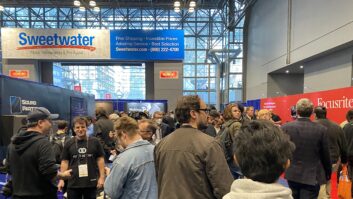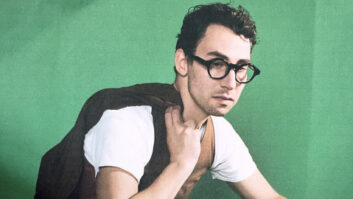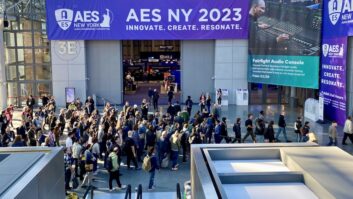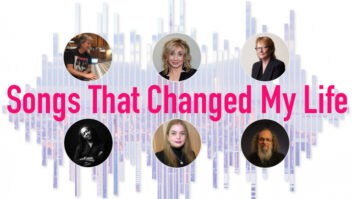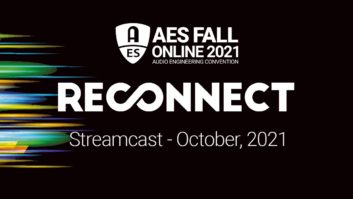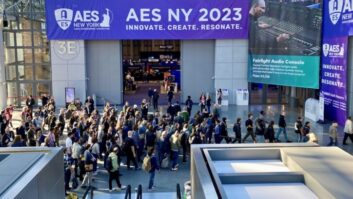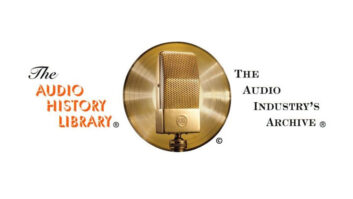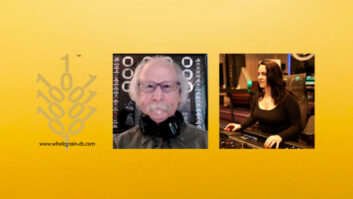Video Game Post-Production, Electric Guitar Science/Ritual, Cell Phone Sound
SAN FRANCISCO: “AES Conventions are focal points for the exchange of technical knowledge,� states Convention Co-Chair John Strawn. “While a bustling Exhibition Hall may represent the most palpable sign of a successful event, it is the Tutorials, Workshops and Papers sessions where some of the most meaningful and lasting benefits are accrued. Tutorial Co-Chairs Jim McTigue and Conrad Cooke have developed a particularly worthwhile program for the 125th Convention, Oct. 2-5 at the Moscone Center.�
Cornerstones of the “AES University,� Tutorials provide enlightening, introductory level insights into topics with broad appeal. No previous knowledge in the area is presumed, and Q&A sessions often inspire invaluable dialogues among committed attendees. All twenty Tutorials are detailed by comprehensive abstracts on the Calendar of Events at www.aes.org. Program highlights include:
Thursday, October 2, 9:00 am – 10:45 am
ELECTROACOUSTIC MEASUREMENTS: Presenter – Christopher Struck, CJS Labs, SF – A focus on applications of electroacoustic measurement methods, instrumentation, and data interpretation and practical information on how to perform appropriate tests, and correctly interpret the results.
Thursday, October 2, 11:00 am – 1:00 pm
STANDARDS-BASED AUDIO NETWORKS USING IEEE 802.1 AVB:
Presenters – Michael Johas Teener, Broadcom Corporation; Robert Boatright, Harman Int’l; Matthew Xavier Mora, Apple. Recent work by IEEE 802 working groups will allow vendors to build a standards-based network with high-quality service for professional audio performance and production. These new standards provide three major enhancements for 802-based networks: 1. Precise timing to support low-jitter media clocks and accurate synchronization of multiple streams; 2. A simple reservation protocol; 3. Queuing and forwarding rules. This Tutorial will detail these developments.
Friday, October 3, 11:30 am – 12:30 pm
A POST-PRODUCTION MODEL FOR VIDEO GAME AUDIO; SOUND DESIGN, MIXING & STUDIO TECHNIQUES: Presenters – Rob Bridgett, Radical Entertainment, Vancouver; Lin Gardiner (need credit). Video game audio post-production remains a misunderstood process. Successful models of cinema sound post production including mixing, balancing and realistic deadlines will be addressed. Key issues include: the fallacy in stopping sound design simultaneously with art and game design; preparing for audio post-production; real-time sound replacement and mixing interactive mixing strategies; creating a game audio studio facility.
Friday, October 3, 4:30 pm – 6:00 pm
SOUND IN THE UI: Presenter – Jeff Essex, Audiosyncrasy. Many computer and consumer electronics products use sound as part of their UI, both to communicate actions and to create a personality.” This session will explore sounds created for music players set-top boxes and operating systems from design to implementation. Topics will include how people respond to audio cues and how those reactions can convey information on device navigation through menus etc.
Saturday, October 4, 9:00 am – 10:45 am
HOW I DOES FILTERS, AN UNEDUCATED PERSON’S WAY TO DESIGN HIGHLY REGARDED DIGITAL EQUALIZERS AND FILTERS: Presenter –
Peter Eastty, Oxford Digital, Oxfordshire, UK: Many learned papers have been written on the design of audio filters and equalizers, this is NOT one of those. This presenter has reduced the subject of digital filtering into bite sized lumps. The tutorial is designed for the complete novice. Light on mathematics, heavy on explanation and visualization, the provided code works and can be put to practical use.
Saturday, October 4, 9:00 am – 10:30 am
NEW TECHNOLOGIES FOR UP TO 7.1 CHANNEL PLAYBACK IN ANY GAME CONSOLE FORMAT: Presenters – Geir Skaaden, Neural Audio Corporation, Kirkland, WA; Rob Bridgett, Radical Entertainment, Vancouver:
The audio engine within a game is capable of creating a 360 ∞ environment, however, the console hardware uses only a few channels to represent this world. If home playback systems can reproduce up to 7.1 channels, how do game developers increase the number of playback channels for a platform that is limited to 2 or 5 outputs? New encoding technologies will be explored.
Saturday, October 4, 5:00 pm – 6:45 pm
ELECTRIC GUITAR – THE SCIENCE BEHIND THE RITUAL: Presenter
Alex U. Case, University of Massachusetts, Lowell – It is an unwritten law that recording engineers’ approach the electric guitar amp with a Shure SM57, in close against the grille cloth, a bit off-center of the driver, and angled a little. These recording decisions serve us well, but do they really matter? What changes when you back the microphone away from the amp, move it off center of the driver, and change the angle? Alex Case breaks down the variables that lead to punch, crunch, and other desirables in electric guitar tone.
Sunday, October 5, 11:30 am – 1:00 pm
LATEST ADVANCES IN CERAMIC SPEAKERS AND THEIR DRIVERS:
Presenters – Mark Cherry, Maxim, Inc., Sunnyvale, CA and Peter Tiller, Murata, Atlanta, GA. New cell phone designs demand small form factor while maintaining audio sound-pressure level. Speakers have typically been the component that limits the thinness of the design. New developments in ceramic, or piezoelectric, speakers have opened the door for new sleek designs.
“A technology expert whose SF-based Impulsive Audio Consulting firm
specializes in acoustics and broadcast audio, Jim McTigue began his career at NY’s legendary A&R Studios,� John Strawn reports. “Conrad Cooke is an equally accomplished audio professional. He began his career at the BBC in London and has worked with Oxford/Sony Digital, Euphonix and most recently at Apple Computer. Their credentials epitomize the authoritative background of AES Convention Committee Chairs,� Strawn concludes. “We are extremely fortunate to have the benefit of their
knowledge and experience.
Photo: 125th AES Convention Tutorial Co-Chair Jim McTigue. Photo by Alex Storm courtesy of Dolby Labs.
###
Now celebrating its 60th anniversary, the Audio Engineering Society was formed in 1948 by a group of concerned audio engineers. With over 14,000 members throughout the U.S., Latin America, Europe, Japan and the Far East, the AES serves as the pivotal force in the exchange and dissemination of technical information for the industry. For additional information visit http://www.aes.org
